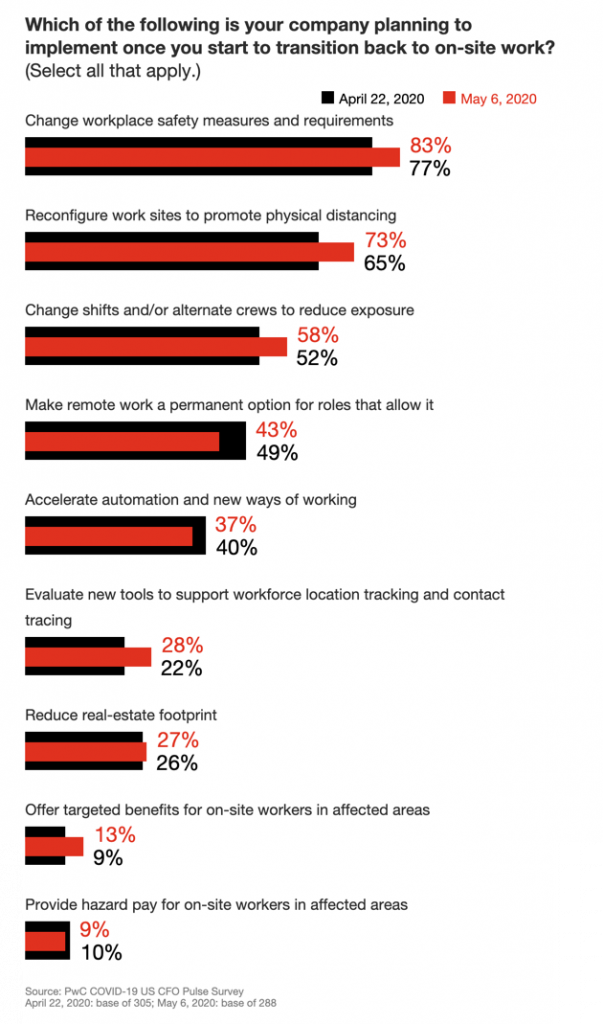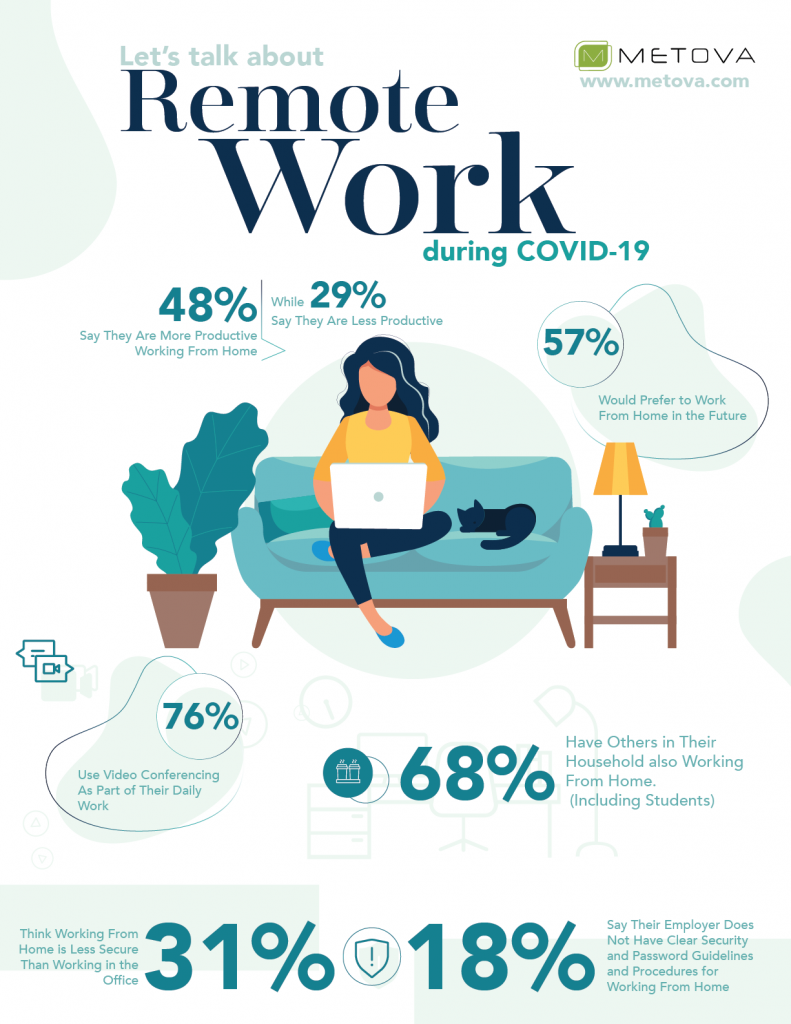The Future of Working From Home
Along with more mindful sanitation habits and rethinking our supply chains, COVID-19 will likely permanently transform work-from-home options for employees. In 2016, Gallup reported 43% of employees work remotely with some frequency. And a 2019 SHRM Employee Benefits Survey found that 69% of employers offered remote work on an ad hoc basis to at least some employees. We don’t yet know what the post-COVID workforce will look like but we can glean some insights from what CFOs are currently thinking. In the latest PwC’s COVID-19 CFO Pulse survey, 68% of US CFOs listed work flexibility, including location, as an effect of COVID-19 making their company better in the long run. This recent survey from May 6th showed less concern over remote workers’ productivity compared to the surveys from months prior. As companies become more accustomed to employees working from home, it seems the benefits may be outweighing the costs and new ways to serve customers are being discovered.
In the same survey, 43% of CFOs reported they are planning to implement remote work as a permanent option for roles that allow it. Global Workplace Analytics predicts that 56% of the US workforce holds a job that is compatible with remote work and that 25-30% of the workforce will work from home multiple days per week by the end of 2021.

Based on the PwC surveys, work from home options appear to be here to stay at least for now. Employers’ productivity fears are waning and employees are getting a taste for flexibility and eliminated commute times. Employers will see a rise in demand for work from home options as employees opt for jobs where it is offered. In April, Metova surveyed over 1,000 employees who had recently transitioned to working from home and found 57% preferred working from home and only 29% found they were less productive.

Results from the Metova survey also show that while technology has enabled more employees to work from home, 31% feel their home work environment is less secure than the office and 18% report a lack of clear security guidelines while working from home. Establishing a VPN to allow work from home is a common first step in securing a mobile workforce but products such as DNSWatchGO from WatchGuard allow implementing DNS-level protection for users on the go. This additional layer of security blocks phishing, ransomware and other common attacks and it doesn’t even require a VPN. Along with DNSWatchGO, AuthPoint from WatchGuard can quickly and easily implement multi-factor authentication to eliminate password vulnerabilities.
The data paint a pretty clear picture that work-from-home options are here to stay. Along with the increased flexibility and in some cases productivity, Global Workforce Analytics predicts work-at-home will save U.S. employers $30bn a day during the COVID-19 pandemic. This is due mostly to the continuity in productivity that was enabled through work-from-home policies. Contact us to discuss how the latest in technology can help increase your productivity while maintaining strict security in the new work-from-home normal.


![CISA Phishing Protection Recommendations [Infographic]](https://veruscorp.com/wp-content/uploads/bfi_thumb/dummy-transparent-ncnph3ey82v3yws1xhe3qrjzci23y2f2zeozbzixdu.png)
